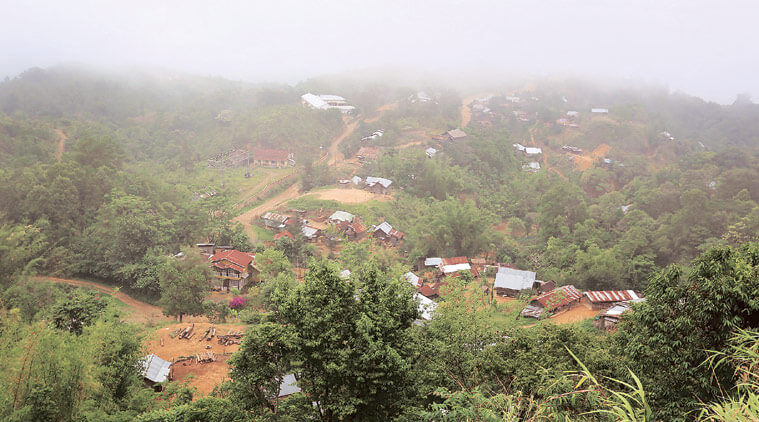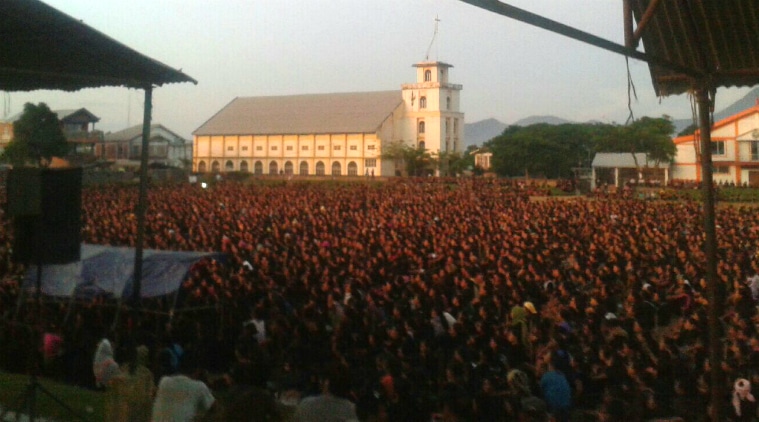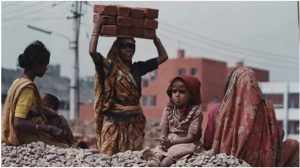Manipur: Decoding the rift between the Meiteis and the hills tribes
The cumulative impact is that the hills people have come to believe that they are given no stake in their own state.
 The mutual suspicion and antagonism between the majority Meitei community and the hill tribals, primarily comprised of the Nagas and the Zomi/Kuki tribes, has a long past.
The mutual suspicion and antagonism between the majority Meitei community and the hill tribals, primarily comprised of the Nagas and the Zomi/Kuki tribes, has a long past.
By Thangkhanlal Ngaihte
On 17 September evening, thousands of people held a vigil at Lamka Public Ground, Churachandpur, Manipur. Photographs, taken from a distance, show a mass of people huddling together and holding torches, conveying a picture of quiet defiance and calm resilience. Half a kilometre to the north, in the Churachandpur District Hospital mortuary, the nine coffins bearing the bodies of the “Tribal Martyrs” wait.
It has been 20 days since the nine people were killed, six of them in police firing, when protests broke out in Churachandpur town and elsewhere in Manipur hill districts on 31 August 2015. The protests were triggered by the passing of three inter-related bills, viz. The Protection of Manipur People Bill, The Manipur Shops and Establishments (Second Amendment) Bill and the Manipur land Revenue and Land Reforms (Seventh Amendment) Bill 2015 in the Manipur Assembly earlier in the day.
[related-post]
The first target of the protestors was residences of their own elected legislators, which were torched. The legislators, including a cabinet minister in the Ibobi Singh government, were accused of not doing anything to stop the bills from passage. Subsequently, the town’s sole police station, the Sub Divisional Officer’s office, the Zonal Education Officer’s office, etc. were also attacked and torched.
The bills in question were introduced in the Manipur Assembly on 28 August and passed on 31 August without any debate. These three bills were the culmination of a two-month long agitation by the Meitei people in the Imphal valley for introduction of an Inner Line Permit (ILP) system to regulate and curtail the entry of “non-Manipuris” into Manipur. The hills people did not take part in these agitations; they do not trust the intentions behind the ILP agitations. They, in fact, objected when a rally was planned in support of the ILP agitation in Churachandpur town on 17 July. On 18 August, a rally in support of the agitation held at Moreh, a trading town in the Indo-Myanmar border, ended in violence when clashes broke out between the Meitei rallyists and the Kuki tribals, who dominated the town.
ALSO READ: Summer of revolt: Why the protest and what are the demands
The mutual suspicion and antagonism between the majority Meitei community and the hill tribals, primarily comprised of the Nagas and the Zomi/Kuki tribes, has a long past. A sort of siege mentality had gripped the Meitei people since about 15 years ago when the Naga integration movement became very strong, threatening to tear Manipur apart. The Meitei people became acutely aware of the tenuousness of the hold they have on their state’s territory. The Manipur Land Revenue &Land Reforms Act, 1960 provided that non-tribals cannot buy and own land in the tribal “Hill Areas”, unless the concerned Deputy Commissioner gave permission with the concurrence of the District Councils. The “Hill Areas” constitute almost 90 per cent of the state’s territory. The Meiteis are non-tribals. As it is, their proprietorship of the “Hill Areas” is only notional.
While the tribals have land, the Meitei people have political power – 40 seats in the 60-seat legislative assembly were Meitei seats. The state government made repeated attempts to undo the limitation placed on the Meitei people regarding land ownership through legislation. The governor, who has a special responsibility regarding the administration of “Hill Areas” of Manipur under Article 371C of the constitution, can block these legislations by not giving assent to the bills.
 The 17 September vigil at Lamka Public Ground, Churachandpur, Manipur.
The 17 September vigil at Lamka Public Ground, Churachandpur, Manipur.
However, the state government often finds ways to undermine this limitation. Under Article 371C of the constitution, “Hill Areas” means such areas as the President may, by order, declare to be Hill Areas. It is in these “Hill Areas” that the MLR &LR Act does not apply, which means that land cannot be transferred to non-tribals.
However, the Manipur government has, overtime, taken out around 200 tribal villages from the cover of the “Hill Areas” and applied the MLR & LR Act on them through official notifications. The constitutionality of this is questionable.
The hill tribals, on the other hand, are not blind to these machinations. They complained of neglect and discrimination in terms of developmental fund allocation, state employment and in every area where state patronage extends. Their longstanding demands for local autonomy, like under the 6th schedule of the Constitution, have not been granted. The Meitei people keep complaining about the paucity of space in the Manipur valley, yet all the crucial institutions and offices have been concentrated in the same crowded plains. The demands of the hills people for locating institutions like National Institute of Technology (NIT) and Central Agriculture University (CAU) in the hills were rebuffed. In 1999 when Manipur hosted the National Games, the hills people pleaded to hold some of the 27 or so events in the hills. It went unheeded.
The cumulative impact is that the hills people have come to believe that they are given no stake in their own state. The Meitei people and the government that they control have no interest in their welfare; it is only interested in their land.
Add to this the trepidations of the Meitei militant groups in the hill areas, especially in Chandel and Churachandpur districts, during much of the last decade.
Landmines planted by them around tribal villages claimed upwards of 60 victims. Then, there were those repeated attacks on the security forces in tribal civilian areas. On 19 January 2004, the Meitei RPF militants attack BSF men in the heart of Churachandpur, and termed it a “New Year gift” to the people of Churachandpur. From 19 January to 12 July 2004, there were at least four such attacks in civilian areas by the Meitei militants in Churachandpur. As I have written at that time, the aim of the attacks seems to be, among others, to terrorise the tribal people. Repeated appeals were made by the tribal bodies and rallies organized against such attacks. But, to no avail. The civil society, in the plains, were in denial.
The hill people do not trust state security forces. They always prefer central forces. When the Justice Jeevan Reddy Committee, which was set up to review the AFSPA, visited the state during 2004-05, many hill bodies argued to the Committee that while they want the AFSPA to go, they wanted central security forces to stay on in their areas. The primary threat to them, in terms of security and land ownership, comes not from outside the state, but inside.
As a local journalist working for the Imphal – based Sangai Express newspaper from 2001 to 2006, I was witness to the hill-plain divide growing wider and wider, both emotionally and politically, during this period. As the Meitei anxiety regarding the state’s territorial integrity grows in proportion to the progress made in the Indo-Naga talks, and as the Zomi/Kuki group also became assertive, the state has been ripe for an explosion since some time. The passage of the three bills provided that necessary spark.
This explains why the contents of the bills are a side-issue for the protesters. They had had enough. They want a “separate administration” by breaking off from the state of Manipur. The hills people seemed united on this, but it’s unlikely to be easy. Meanwhile, the nine martyrs will not yet be laid to rest.
– The author is an independent researcher based in New Delhi. Views expressed are personal.
- 01
- 02
- 03
- 04
- 05





























